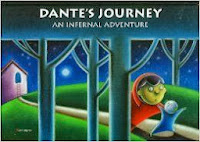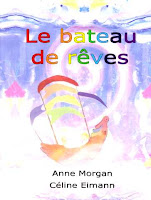Over the past few days, wondering what to write for my blog, I have
been trying to create a list of my ten favourite children’s and young adult
books of the year. I am sometimes one of those people for whom the most recent
is the best. Thank goodness that every year I keep a record of all my reading.
It’s been hard work as I have to reject some which have made a big
impact. I have resisted the temptation to restrict myself to my favourite
genre, picture books, because it would mean I couldn’t include some wonderful
titles. It’s been a hard process and if I were to write this in another few
days, my list may be different. So here
we are. Today’s ten (well, maybe eleven!) favourite books of 2013 but not in
preference order – that would have been too challenging!
Welcome Home by Christina Booth
The story of a boy and a whale and the need to preserve these
wonderful creatures. Its wonderful language and evocative watercolour
illustrations create a sense of place for those who know the Derwent River.
The Wombats Go on Camp by Roland Harvey

A group of children and their teachers go on camp. Harvey’s
inimitable style reflects the comic as well as serious nature of all the
activities, and some of the kids’ names are superb. This is a fun picture book
for primary age students, especially those who have experienced being on
camp.
Xander’s Panda Party by Linda Sue Park and Matt Phelan
To celebrate Xander’s birthday he wants to have a party. He knows
there are no other pandas in the zoo, but each time he decides on an animal group to
invite, he realises there are some animals which don’t fit his parameters. By
the end everyone has been included.
How the Dinosaur Got to the
Museum by Jessie Hartland
The story of a diplodocus
longus from its life through to how its fossilised remains arrived at the
Smithsonian Museum, and all the people who were involved in its display. Told
in a similar format to The House that
Jack Built, this book meets the need of those many youngsters obsessed with
dinosaurs.
Funny bums by Mark Norman
An introductory look at animals’ backsides, and why the animals
themselves are shaped the way they are. The quirky humour draws in the young
reader.
Journey by Aaron Becker
A wordless picture book which takes the reader on an exciting adventure
after the young girl draws a doorway on her bedroom wall and enters a new
highly imaginative world, her magic red crayon in hand.
It’s a wonderful opportunity for storytelling.
Exclamation mark! by Amy Krouse Rosenthal and Tom Lichtenheld
This is a great introduction for young readers to the use of
punctuation. It’s presented in a humorous but not didactic way. There are
multiple levels to the narrative, showing readers that they can stand out from
the crowd as well as fit in with everyone else.
The Song for a Scarlet
Runner by Julie Hunt
Peat, a feisty young girl, is forced to undertake a quest but she
discovers it is one without treasures and physical battles. She discovers
herself and her powers on the way. Along the way she meets many wonderful
characters, Stiltboy perhaps being the most unexpected.
The Vanishing Moment by Margaret Wild
This is an interesting multi-voice novel. Three young people tell
their stories of life in a small town and how tragedy has affected them. There
are occasional overlaps of perspectives and interconnections between them.
 Eleanor and Park by Rainbow Rowell
Eleanor and Park by Rainbow Rowell
Set in 1986, this is the story of the developing relationship
between eccentric dresser Eleanor and Park with his Korean heritage. There are
so many themes: school bullying, dysfunctional families, 1980s music and more,
but it’s a great love story, a thought-provoking read and a fabulous
description of first love.
The Day the Crayons Quit by Drew Daywalt and Oliver Jeffers
A humorous look at what happens when the crayons decided to complain
that they are overworked (while some are underworked). Duncan, the narrator,
works to solve the problem. Young readers may find that their use of colour
changes after reading this book.
Have you seen all these? What are your favourites?
Maureen Mann





































